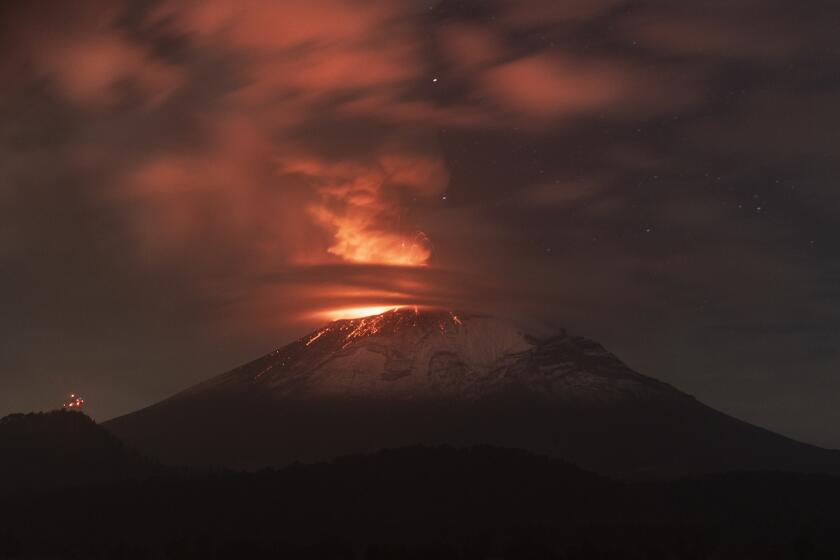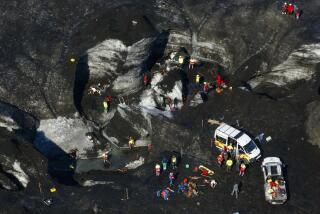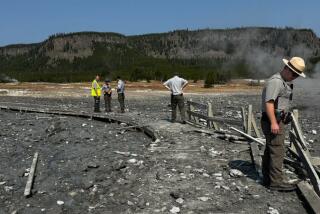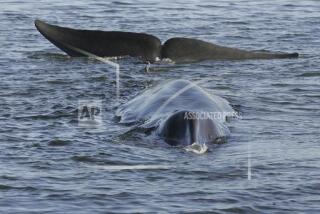A volcano erupts in Iceland and spews magma, in a spectacular show of Earth’s power
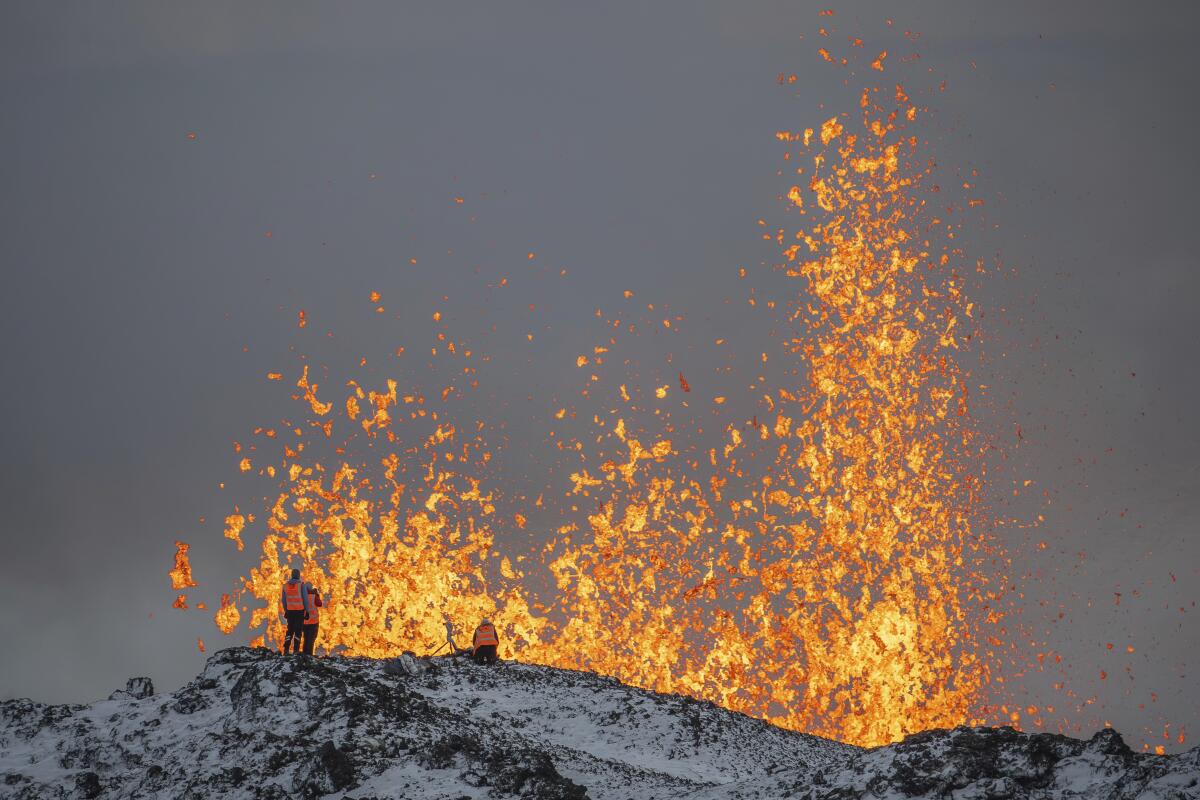
- Share via
STOCKHOLM — A volcano has erupted in southwestern Iceland, sending a flash of light into the evening sky and spewing semi-molten rock into the air, in a spectacular show of the Earth’s power in the land known for fire and ice.
The eruption Monday night appears to have occurred about 2½ miles from the town of Grindavik, the Icelandic Meteorological Office said. The town near Iceland’s main airport was evacuated in November after strong seismic activity damaged homes and raised fears of an imminent eruption.
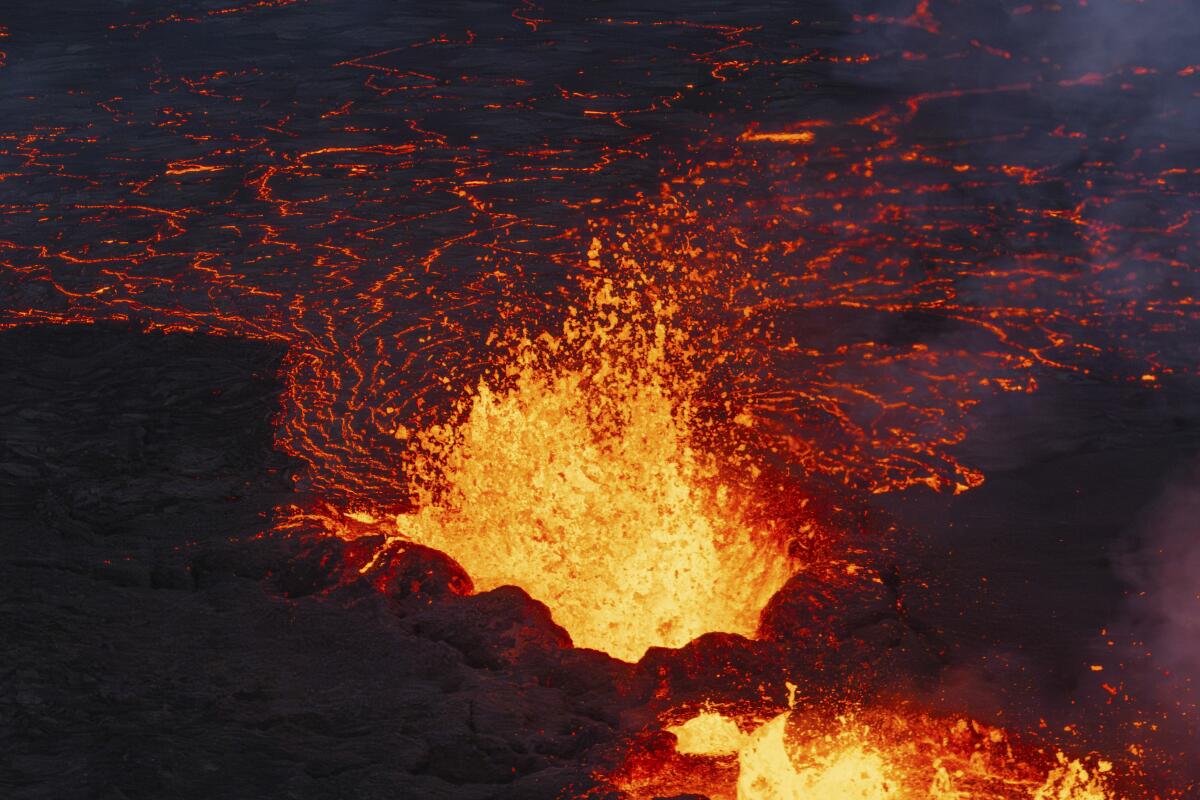
Iceland, which sits above a volcanic hot spot in the North Atlantic, averages an eruption every four to five years. The most disruptive in recent times was the 2010 eruption of the Eyjafjallajokull volcano, which spewed huge clouds of ash into the atmosphere and led to widespread airspace closures over Europe.
But Monday’s eruption on the Reykjanes Peninsula, about 30 miles southwest of the capital, Reykjavik, wasn’t expected to release large amounts of ash into the air. Iceland’s foreign minister, Bjarni Benediktsson, tweeted that there were no disruptions of flights to and from the country, and international flight corridors remained open.
Volcanic pall over Europe shows no signs of disappearing
Icelandic broadcaster RUV showed a live feed of the eruption on its website. Christmas carols played in the background.
By early Tuesday afternoon, the Icelandic Meteorological Office reported that the size of the volcanic eruption at Sundhnuksgígar “continues to diminish.” It said the lava flow was estimated to be a quarter of what it was at the time of the eruption. Lava “fountains” that reached as high as 90 feet have been weakening.
Prime Minister Katrin Jakobsdottir told RUV that the lava was not endangering critical infrastructure near the volcano. Although the lava flow was moving in a promising direction, precautions were being taken near the Svartsengi power plant.
“We also know that the flow of lava can change the surrounding landscape, so this can change with short notice,’’ Jakobsdottir said.
The November evacuation of Grindavik meant that few people were near the site of the eruption when it occurred, and authorities have warned others to stay away. The nearby Blue Lagoon geothermal spa — one of Iceland’s biggest tourist attractions — closed temporarily last month as a swarm of earthquakes put the island nation on alert for a possible volcanic eruption.
Amid a series of booming eruptions, Mexican authorities have told millions who live near the Popocatépetl volcano to prepare for possible evacuation.
Nonetheless, the residents of the evacuated fishing community of 3,400 had mixed emotions as they watched orange flames touch the dark sky. One month after the evacuation, many are living in temporary accommodations and don’t expect to ever be able to return to their homes.
“The town involved might end up under the lava,” said Ael Kermarec, a French tour guide living in Iceland. “It’s amazing to see, but there’s kind of a bittersweet feeling at the moment.”
Magnus Tumi Gudmundsson, a scientist who flew over the site Tuesday morning on a coast guard research flight, told RUV the eruption was expected to continue decreasing in intensity, but scientists have no idea how long it could last.
“It can be over in a week, or it could take quite a bit longer,” he said.
The Fagradalsfjall volcano, which sits in an uninhabited valley not far from Keflavik Airport, Iceland’s international air traffic hub, erupts again.
Matthew Watson, a professor of volcanoes and climate at the University of Bristol, said tourists should follow travel advice because hazards such as new eruptions can quickly put people in harm’s way.
“As is common with this eruptive style, it began with a sustained eruption of ballistics that, over time, has lengthened to form a fire curtain — a long fissure out of which lava is being violently ejected,” he said. “This style of eruption is amongst the most spectacular ever seen, and there will be a strong pull for tourists, even though the Blue Lagoon complex has again shut.”
More to Read
Sign up for Essential California
The most important California stories and recommendations in your inbox every morning.
You may occasionally receive promotional content from the Los Angeles Times.
